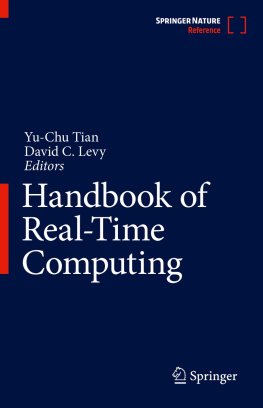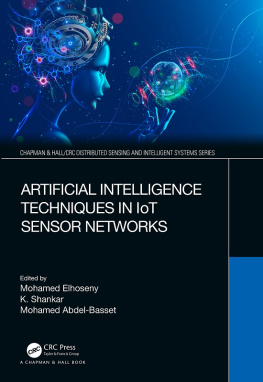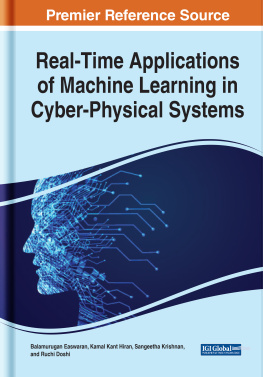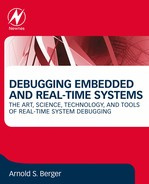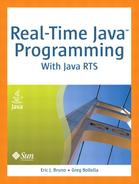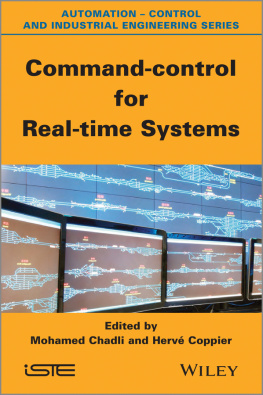Editors
Yu-Chu Tian
School of Computer Science, Queensland University of Technology, Brisbane, QLD, Australia
David C. Levy
School of Electrical and Information Engineering, The University of Sydney, Sydney, NSW, Australia
ISBN 978-981-287-250-0 e-ISBN 978-981-287-251-7
https://doi.org/10.1007/978-981-287-251-7
Springer Nature Singapore Pte Ltd 2022
This work is subject to copyright. All rights are reserved by the Publisher, whether the whole or part of the material is concerned, specifically the rights of translation, reprinting, reuse of illustrations, recitation, broadcasting, reproduction on microfilms or in any other physical way, and transmission or information storage and retrieval, electronic adaptation, computer software, or by similar or dissimilar methodology now known or hereafter developed.
The use of general descriptive names, registered names, trademarks, service marks, etc. in this publication does not imply, even in the absence of a specific statement, that such names are exempt from the relevant protective laws and regulations and therefore free for general use.
The publisher, the authors, and the editors are safe to assume that the advice and information in this book are believed to be true and accurate at the date of publication. Neither the publisher nor the authors or the editors give a warranty, expressed or implied, with respect to the material contained herein or for any errors or omissions that may have been made. The publisher remains neutral with regard to jurisdictional claims in published maps and institutional affiliations.
This Springer imprint is published by the registered company Springer Nature Singapore Pte Ltd.
The registered company address is: 152 Beach Road, #21-01/04 Gateway East, Singapore 189721, Singapore
Preface
Real-time computing correlates the performance of a computer, embedded system, or communication network together with time. It focuses on the design of application systems that must complete a task or return a response within a certain time frame, which is known as deadline. Depending on the application, the deadline requirement could range from nanosecond in computer network communications to millisecond in medical diagnosis or even seconds or minutes in many industrial control systems. Missing the deadline will violate the system requirements, while completing a task much earlier than the deadline may also deteriorate the system performance. Fast responses and/or precise timing control with or without fast response requirements are typical features of real-time computing. This can be interpreted as completing computing tasks at right times in real-time computing.
Real-time computing is widely used in various applications. In industrial systems such as power plants and power transmission and distribution networks, real-time monitoring and control over the whole communication networked systems become essential for system stability, performance, safety, and reliability. In our daily life, with the increasing demand on high-speed communication and network activities, real-time computing has become one of the key technologies to provide ultimate real-time networked services.
The Handbook of Real-Time Computing aims to summarize the state of the art of real-time computing. It is organized into five sections, which cover five selected aspects of real-time computing from theory to applications. The five sections are
Principles and Theories of Real-Time Computing
Real-Time Scheduling
Real-Time Systems
Real-Time Networks and Communications
Real-Time Multi-agent Systems
Each of these five sections is edited by an expert in the specific domain. Authors of all chapters are experts on their respective topics, and many of them are well-recognized world-leading researchers. We congratulate all section editors and authors for their contributions, which reflect their expertise and knowledge, to the present handbook. We hope that the collection of these sections each with a number of chapters in the present handbook will provide a full and quick technical reference with a high-level historic review, detailed technical descriptions, and latest practical applications in real-time computing.
It has been a long journey to present this five-section handbook to readers. We would like to acknowledge all section editors and authors for their creative contributions, without which the production of this handbook would have not been possible. We are grateful to Springers MRW (Major Reference Works) publisher Mr. Stephen Yeung, who initiated this handbook project and demonstrated his enthusiasm, professionalism, support, and patience throughout the process of the project. Last but not the least, special thanks go to Springers project coordinators (Books), Ms. Rekha Sukumar, Ms. Juby George, Meena Thiagarajan, Akshara P P, Nivedita Baroi, and Mr. Ramesh Nath Premnath, who coordinated the project at different times leading to the production of the handbook. It has been an enjoyable experience to work with these professionals and Springer.
Let us look forward to further development and evolution of new theories and technologies of real-time computing.
Dr. Yu-Chu Tian
Dr. David C. Levy
Brisbane, Australia Sydney, Australia
July 2022

